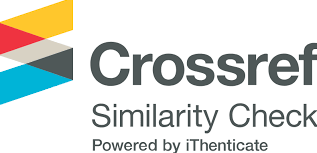Establishing the entomopathogenic fungus Beauveria bassiana as an artificial endophyte in Eucalyptus camaldulensis for the control of the gall wasp Leptocybe invasa.
Keywords:
Artificial endophyte, Beauveria bassiana, Eucalyptus camaldulensis,, Leptocybe invasaAbstract
The fungus Beauveria bassiana is a common fungal parasite of many
arthropod species. The entomopathogenic properties of B. bassiana are
well-known and it is used widely in biological control strategies in
agriculture and forestry. Some strains of the fungus are mass-produced as
commercial biological insecticides in many countries. This fungus can live
as a natural endophyte in various plant species. Some studies have shown
that B. bassiana can survive as an artificial endophyte in several plants. Its
mycelium can infect, colonize and survive in plant tissues after artificial
inoculation. Until now, B. bassiana has been reported only as an artificial
endophyte of maize, potato, tomato, cocoa, cotton, wheat and banana.
Therefore, the aim of this study is to experiment B. bassiana as an
artificical endophyte of Eucalyptus camaldulensis for the control of the
gall wasp Leptocybe invasa. We established artificial inoculation of the
fungus as an endophyte in E. camaldulensis seedlings using two methods:
(1) geminated seeds were drenched with conidial solution with a concentration of 10
8
CFU/ml of B. bassiana, and (2) germinated seeds
were grown in a fungal mat of B. bassiana for 7 days. Results showed that
at 12 weeks post-inoculation, B. bassiana had colonized the leaves, shoots
and stems of the seedlings, with 76.7% of seedlings colonized using the
conidial solution on germinated seeds and 80.0% colonized using
germinated seeds grown in fungal mats. Height of seedlings colonized
with B. bassiana was increased by 33.2% compared to non-inoculated
control seedlings. Damage index scored for L. invasa on colonized
seedlings was reduced by 82.1% compared to control seedlings and the
damage severity of the colonized seedlings was also low, in the other
hand, the non-colonized control seedlings got high level of damage
References
1. Arnold, A. E., Lewis, L. C., 2005. Ecology and evolution of fungal endophytes and their roles against insects. In: Vega FE, Blackwell M (eds), Insect - Fungal Associations: Ecology and Evolution. Oxford University Press, New York. 74 - 96.
2. Bing, L. A., Lewis, L. C., 1991. Suppression of Ostrinia nubilalis (Hubner) (Lepidoptera, Pyralidae) by endophytic Beauveria bassiana (Balsamo) Vuillemin. Environmental Entomology 20: 1207 - 1211.
3. Jones, K. D., 1994. Aspects of the biology and biological control of the European corn borer in North Carolina [Doctoral dissertation]. Raleigh: North Carolina State University. 127p.
4. Leckie, B. M., 2002. Effects of Beauveria bassiana mycelia and metabolites incorporated into synthetic diet and fed to larval Helicoverpa zea, and detection of endophytic Beauveria bassiana in tomato plants using PCR and ITS [Master’s dissertation]. Knoxville: The University of Tennessee. 75 p.
5. Parsa, S., Ortiz, V., Vega, F.E., 2013. Establishing Fungal Entomopathogens as Endophytes: Towards Endophytic Biological Control. J. Vis. Exp. (74), e50360, doi:10.3791/50360.
6. Posada, F. J & Vega, F.E., 2005. Establishment of the fungal entomopathogen Beauveria bassiana (Ascomycota: Hypocreales) as an endophyte in cocoa seedlings (Theobroma cacao), Mycologia, 97(6): 1195 -1200.
7. Trigiano, Robert N. & Gray, Dennis J., 2010. Plant Tissue Culture, Development and Biotechnology. Boca Raton: CRC Press. 186p. ISBN 1 - 4200 - 8326 - 0.
8. Vega, F. E., 2008. Insect pathology and fungal endophytes. Journal of invertebrate pathology. 98: 277 - 279.
9. Yoshinori Tanada and Harry K. Kaya, 1993. Insect pathology. Academic press, IRC. Harcount brace jovanovich, publishers, San Diego/ New Yourk/ Boston/London/ Sydney/Tokyo/Toronto.








